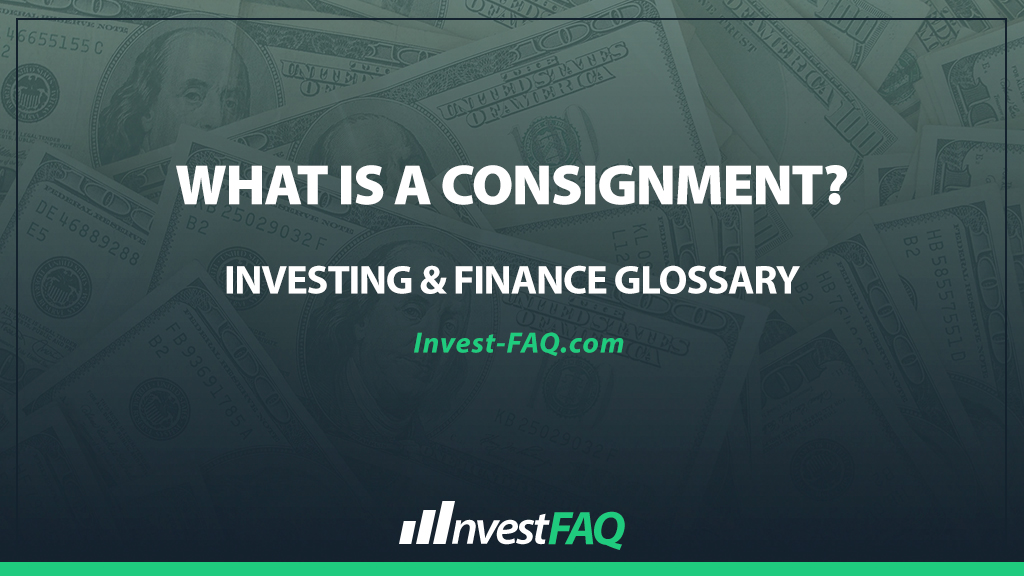
Consignment
Contents
A consignment is a business arrangement where goods are placed in the care of another party (the consignee) to sell, but the ownership remains with the initial party (the consignor) until the goods are sold. This model allows the consignor to expand market reach without the consignee needing to invest upfront in inventory.
Consignment is widely used in various industries, including retail, art, and manufacturing, to manage inventory risks and costs.
It enables consignees to offer a wider range of products without making substantial investments in stock, while consignors gain access to new markets and potential customers without directly managing a retail space.
Example of a Consignment
“Artistic Expressions,” a gallery, agrees to display and sell paintings on behalf of “Creative Minds,” a group of artists. Creative Minds retains ownership of the paintings until each is sold, making this a consignment arrangement.
Inventory Consigned: 10 paintings valued at $5,000 each.
Consignee (Artistic Expressions): Displays the paintings for sale.
Sales Proceeds: Upon selling a painting, Artistic Expressions remits the sale price to Creative Minds, retaining a 20% commission for the sale.
In this scenario, Artistic Expressions does not purchase the paintings but provides a platform for their sale, earning a commission on each painting sold.
The accounting treatment requires Creative Minds to record the consigned goods as inventory in its financial statements until sold. Artistic Expressions will recognize commission revenue upon the sale of each painting, without ever recording the paintings as inventory on its balance sheet.
Significance for Investing & Finance
The consignment model holds particular significance in accounting due to its impact on inventory management, revenue recognition, and financial reporting:
Inventory Recognition: The consignor continues to report consigned goods as inventory, reflecting the ongoing ownership and associated risks.
Revenue and Expense Recording: The consignee recognizes revenue from commissions or fees earned from sales, rather than from the sale of goods themselves. The consignor recognizes revenue upon the sale of goods by the consignee.
Risk Management: Consignment agreements shift some market risk from the consignor to the consignee, as the consignor retains ownership of the inventory, potentially affecting financial stability and liquidity.
Relationship Management: Accurate record-keeping and transparent financial reporting are crucial to maintaining trust between consignors and consignees, ensuring that each party is properly compensated per the consignment agreement.
In summary, consignment arrangements offer businesses a flexible approach to selling and distributing products by minimizing upfront investments and spreading market exposure.
Proper accounting treatment is crucial to reflect the true financial position and performance of both consignors and consignees, requiring careful attention to the recognition of inventory, revenue, and associated costs.
FAQ
What distinguishes a consignment arrangement from a traditional sales transaction?
In a consignment arrangement, goods are sent to a consignee who sells the goods on behalf of the consignor, with ownership remaining with the consignor until the items are sold, unlike a traditional sales transaction where ownership transfers immediately upon purchase.
How are unsold goods handled in a consignment agreement?
Unsold goods in a consignment agreement can either be returned to the consignor at the end of the consignment period or extended under a new agreement, depending on the terms set between the consignor and consignee.
What are the typical financial responsibilities of a consignee in a consignment arrangement?
A consignee’s financial responsibilities typically include paying the consignor for goods sold, less a previously agreed upon commission, and sometimes covering certain expenses related to the sale of the goods, as specified in the consignment agreement.
How is inventory accounted for in a consignment arrangement from the consignor’s perspective?
From the consignor’s perspective, consigned inventory is still considered the consignor’s asset and remains on their balance sheet as inventory until the goods are sold by the consignee, at which point it is recorded as a sale.
